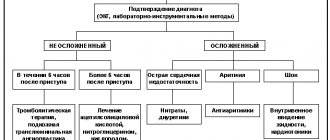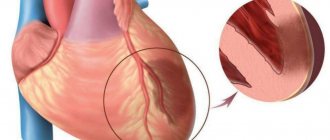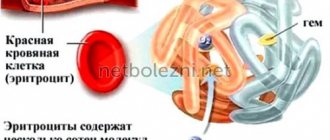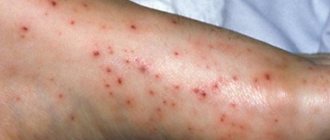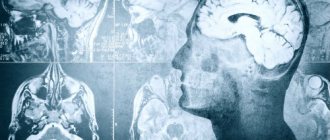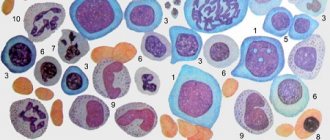Physical inactivity - what is it?
Physical inactivity is a condition characterized by insufficient physical activity and decreased muscle strength. It is not an independent disease. The main symptoms of physical inactivity: constant fatigue and decreased performance, excess weight, insomnia and emotional lability. Diagnosis is based on medical history and objective examination; laboratory and instrumental methods are used to identify concomitant pathologies. Treatment consists of gradually increasing the volume of physical activity and eliminating the etiological factors of physical inactivity. If there are indications, drug correction is carried out.
Types of activities
For healthy individuals aged 18 to 64 years, healthy physical activity may include walking, Nordic walking, cycling, leisure swimming, professional activities, household chores, and any activity as part of daily activities, the specialist says.
For people aged 65 years and older, health benefits include health-improving exercises, regular walking, professional activities if available, household chores, and active leisure activities, taking into account the body’s capabilities and health status. “For people in this age category, neuromotor physical activity is also recommended, the purpose of which is to prevent falls through exercises aimed at improving balance, coordination and gait,” notes Vera Larina.
Secrets of athletes. What vitamins and amino acids do few people know about? More details
Causes and risk factors
Physical inactivity can be caused by objective reasons, for example, disability, severe and long-term illness. But in most cases it is associated with improper lifestyle organization or sedentary work. The main risk factors for the development of physical inactivity include:
- insufficient physical activity;
- excess body weight;
- psychological disorders;
- somatic diseases;
- genetic factors;
- intrauterine fetal hypoxia;
- birth injuries;
- bad habits.
Symptoms of physical inactivity
Physical inactivity is characterized by gradual development, that is, the symptoms of the pathology do not appear in the patient immediately, but periodically. The disease of an immobile lifestyle begins to manifest itself in the form of an increasing feeling of apathy, rapid fatigue, a noticeable decrease in performance, disturbances in the quality of sleep, the appearance of nervousness, irritability, and aggressiveness. As the disease progresses, symptoms become aggravated - periodic headaches begin, the risk of fractures increases, weight increases, shortness of breath occurs, and back pain worsens. In some women, physical inactivity provokes the development of anorgasmia, and in men, erectile dysfunction.
Features of the course in children
In children and adolescents, it develops due to limited mobility at school and at home.
When a child spends most of the day at school, stagnation of blood and lymph occurs in the lower extremities, but the brain and other organs are less well supplied with blood. Oxygen starvation occurs, attention, memory, ability to think and concentrate deteriorate.
Weakness of the muscular frame, especially the anti-gravity muscles of the back, provokes poor posture and curvature of the spine.
In children, an inactive lifestyle leads to the development of diseases much faster, because their skeleton and muscular system are not yet fully formed and do not have a sufficient reserve of resistance.
Information for the public
“HYPODYNAMIA is a disease of civilization”
Physical inactivity is a weakening of muscle activity caused by a sedentary lifestyle and limited physical activity.
Physical inactivity is also called a disease of the 21st century and the flip side of progress. Various technological advances make the life of a modern person simpler and easier. Household work is made easier by various household appliances. Walking is increasingly being replaced by traveling by transport, and walking up stairs is being replaced by riding an elevator. The use of numerous benefits of civilization leads to the fact that a person begins to lead a sedentary lifestyle, which has a bad effect on health. Children, especially teenagers, cannot be kicked out into the street, because spending their free time playing bright, attractive computer games, watching TV while lying on the sofa, or communicating with peers on social networks is very interesting. Adults, especially recently, are also susceptible to this disease. Reduced activity leads to many disorders and premature decline of the body, because man was originally designed by nature for increased physical activity. Some researchers claim that in the 21st century, physical activity has decreased by approximately 100 times compared to previous centuries. Physical activity, according to scientists, is closely related to three aspects of health: physical, mental, social, and plays a different role throughout a person’s life. Physical inactivity is a fairly common condition, which is accompanied by not just a large, but a truly huge number of very diverse symptoms. First of all, physical inactivity leads to various disorders of the functional state of the human body. Such disorders make themselves felt in the form of atrophy of muscles and bones, metabolic disorders in them, and a decrease in the amount of calcium in the bones, which causes frequent fractures. People with physical inactivity experience symptoms such as frequent headaches, excessive nervousness, increased excitability, neurasthenia, insomnia, asthenic conditions, general fatigue, and decreased performance. Deterioration of blood supply to the brain leads to weakening of memory, decreased attention, impaired coordination of movements, and increased time for mental operations. Another fairly common sign of physical inactivity is an increase in appetite, which can lead to obesity, the development of atherosclerosis, hypertension and other diseases of the heart and blood vessels. Prolonged sitting causes a decrease in the depth of breathing, the body's metabolism decreases, and blood stagnates in the lower extremities. The adverse consequences of a sedentary lifestyle also manifest themselves in the body’s poor resistance to colds and infectious diseases, which creates the preconditions for the formation of various chronic diseases. Physical inactivity is especially dangerous in childhood. It is often observed among schoolchildren who are overloaded with curriculum. It is in them that physical inactivity negatively affects the development of the musculoskeletal system, cardiovascular, respiratory, endocrine and other systems, and delays the formation of the body.
Only physical activity will help avoid the most common disease of the 21st century - physical inactivity. The main “medicine” is movement . It doesn’t matter what form of physical activity you choose - morning exercises, walking, skiing, dancing, visiting the pool or fitness club. The main thing is to start! Train yourself to jog in the morning or evening. If possible, walk to work, the store and back without using public transport. Make it a habit to go up and down the stairs without going through the elevator. Be sure to do warm-ups while working. Don't give up going out with your family. Be in nature more often and try to dose out the work on your garden plots. Remember that any physical activity should be feasible and reasonable. Each of us has the conditions for all this, we just need to use it correctly. Physical exercise, thanks to the “joy” hormones, causes positive emotions, cheerfulness, and creates a good mood. Therefore, it becomes clear why a person who has known the “taste” of physical exercise and sports strives to engage in them regularly.
It is really possible to have good health, you just need a little perseverance, will and desire to change your life.
What are the dangers of body immobility and physical inactivity?
- Since there is no physical activity, the patient’s muscles begin to flabby, weaken, and their elasticity and firmness are lost. This condition is dangerous due to the development of atrophy.
- The patient's strength and endurance decrease, and pathologies of the nervous system are observed (nervous disorders, depression).
- A prolonged course of the disease threatens the development of osteoporosis, as the bones stop absorbing calcium. Pathology can cause the development of osteoarthritis, as well as osteochondrosis.
- Passivity is a direct path to the development of cardiac pathologies (coronary disease, hypertension, arrhythmia).
- The functionality of the respiratory system is impaired, which leads to congestion and obstruction.
- The pathology provokes a malfunction of the digestive system - intestinal motility is disrupted, constipation and colitis appear.
All of the above negative conditions lead to a decrease in the patient’s life expectancy.
Complications of physical inactivity
The main “target” of physical inactivity is the cardiovascular system. Patients experience dyslipidemia and atherosclerotic vascular lesions, which contribute to the development of coronary artery disease. Due to calcification and rigidity of the vascular wall, arterial hypertension occurs. The mortality rate from cardiac causes (heart attack, heart failure) in patients with physical inactivity is 20-30% higher than the population average.
The musculoskeletal system is affected. Osteoporosis develops and the incidence of bone fractures increases. The function of the joints (osteoarthrosis) and the spinal column (osteochondrosis) suffers. A connection between physical inactivity and aging has been established: in older women who devote less than 40 minutes to physical activity per day, their biological age is 8-10 years higher than their passport age. Ultimately, all these complications reduce life expectancy.
Physical inactivity is a problem of civilization
The expression “sedentary lifestyle” is associated with a complacent sybarite weighing over 100 kg, comfortably seated on the sofa with a bag of popcorn in his hands. But it’s time to admit that this is a cliche that has little to do with reality. In fact, the problem of low physical activity does not only affect obese people.
The eternal attraction of an upholstered chair
In recent years, there has been a lot of talk about the importance of an active lifestyle. We're told on TV and in magazines that regular exercise prevents a wide variety of chronic diseases, including cancer. That physical inactivity is the leading preventable cause of death worldwide. That movement is life. But no matter how many times they told the world that they need to get off the couch, the world stubbornly strives for it. And statistics, unfortunately, confirm this.
In 2021, a group of Swiss scientists working under the auspices of the World Health Organization published the results of an extremely interesting study in The Lancet that examined the physical activity of the inhabitants of planet Earth (1). Scientists analyzed data from 358 surveys from 168 countries, which included information on the physical activity of 1.9 million people.
The study showed that more than 25% of the world's population - about 1.4 billion - lead an inactive lifestyle. This is approximately 28% of those over 18 years of age. There is also data on teenagers: 81% of teenagers 11–17 years old move too little.
Residents of developed countries face a particular threat: underactivity is twice as common there as in low-income countries. Interestingly, women are at risk: according to statistics, every third female representative is insufficiently active and only every fourth male.
Despite active promotion of a healthy lifestyle over the past decade, the level of physical activity in the world has remained virtually unchanged from 2001 to 2021. But today, when the lives of each of us have literally been turned upside down by COVID-19, the problem has become even more acute.
Pandemic without movement
Scientists have calculated that already in the first months of quarantine, which broke out last spring, the level of physical activity decreased by 35%, and in general the prevalence of a sedentary lifestyle increased by 28%. We have begun to walk much less: if in the pre-COVID era the average person walked about 10 thousand steps a day, today he hardly takes 4.6 thousand steps.
According to experts, a decrease in physical activity of the world population at the beginning of the 2020 pandemic could lead in the future to 11.1 million new cases of type 2 diabetes and, as a result, 1.7 million deaths from its complications. But besides diabetes, there are many other diseases that develop due to lack of exercise! Already today there are concrete, “tangible” consequences of “covid” physical inactivity: the prevalence of depression, according to some data, has doubled over the past year. It is obvious that this trend needs to be changed – and as quickly as possible! And for this it is important to understand what it is – an active lifestyle.
Be in your comfort zone
According to the recommendations of experts from the World Health Organization, the required level of activity during the week is:
- 150–300 minutes of moderate-intensity aerobic physical activity,
or
- 75–150 minutes of high-intensity aerobic physical activity,
or
- an equivalent combination of high- and moderate-intensity exercise.
This is the minimum that everyone needs. There are also recommendations for additional loads for those who want to achieve more:
- exercises to strengthen major muscle groups - two days a week or more;
- moderate-intensity physical activity of 300 minutes or more per week, or vigorous-intensity exercise of more than 150 minutes per week, or an equivalent combination.
As you can see, there is nothing “military” in these recommendations: everyone can implement them. However, it is no secret that since the beginning of the pandemic, our lives have become more “closed”. However, even in such conditions it is quite possible to maintain a normal level of activity. We have selected a few tips that will make this task easier.
Take short active breaks throughout the day
Short-term physical activity is also beneficial, so you should take advantage of every opportunity to move. Dancing, playing with children, doing housework, cleaning the garden are great ways to stay active.
Take advantage of online training programs
Today there are many online programs, including free ones, that offer workouts for different fitness levels. Choose a course that suits you and enjoy your health!
Get up from your chair
If possible, reduce your sedentary lifestyle. When working at a computer, get up every half hour to stretch. Consider replacing a chair with a standing desk by using a high desk.
And of course, make time for relaxation - just a few minutes a day in peace and quiet is enough to restore your inner strength and return to an active life.
Source:
- Guthold R. et al. Worldwide trends in physical insufficient activity from 2001 to 2021: a pooled analysis of 358 population-based surveys with 1.9 million participants // The lancet global health. - 2021. - 6 (10). - e1077–e1086.
Marina Pozdeeva, pharmacist, medical journalist
Photo depositphotos.com The author’s opinion may not coincide with the opinion of the editors
Treatment of physical inactivity
If symptoms of pathology appear, you need to visit a competent specialist for diagnosis. This is necessary, since the symptoms of physical inactivity are not specific and may indicate the progression of other ailments. The course of treatment is developed based on the degree of development of the disease, as well as the general condition of the patient.
Before treating the disease, it is necessary to eliminate the true cause, which led to physical inactivity. The treatment plan is usually aimed at eliminating the consequences of the pathology (obesity, increased blood pressure, sexual dysfunction, etc.).
Correction of the pathological condition, in addition to a gradual increase in physical activity, includes physiotherapeutic methods, massage, and diet therapy. To restore the functions of organs and body systems during physical inactivity, the following are recommended:
- physical therapy – you should start with it, especially with physical inactivity that has developed against the background of somatic diseases;
- aerobic physical activity (fast walking, running, badminton, tennis, skiing);
- strength exercises;
- exercises to stretch muscles and ligaments.
For physical inactivity that has developed against the background of psychological problems, it is recommended to work with a psychologist or psychotherapist. Children, as well as adults, are recommended to play outdoor games, play sports or dance, and travel.
Prevention of CVD
Prevention of cardiovascular diseases is a system of measures aimed at eliminating or minimizing the negative consequences of pathological changes in the heart and blood vessels on the body.
It has been proven that maintaining a healthy lifestyle with increased physical activity, with gradual normalization of body weight by reducing caloric intake, significantly reduces the risk of developing cardiovascular diseases.
Balanced diet
Special epidemiological studies conducted among large populations show that adherence to diet alone without medication leads to a reduction in the incidence of heart disease by 15% and stroke by 27%.
Recommended diet:
- Protein-rich foods: lean meats, fish, cottage cheese, cereals, legumes.
- Increasing the proportion of foods containing potassium in the menu: baked potatoes with peel, raisins, sardines, halibut, apricots, grapefruits, bananas.
- More fiber and dietary fiber: oatmeal, bran, whole grain bread, raw vegetables and fruits at least 500 g/day.
- Inclusion in the menu of dishes containing polyunsaturated fatty acids (Omega 3, 6, 9): sea fish, avocados, nuts, olives.
- Sufficient intake of minerals (calcium, magnesium) into the body with food: dairy products, salmon, cocoa, buckwheat.
- Avoid highly processed animal products: sausages, sausages, smoked meat.
- Reduce the consumption of animal fats to 10% of the daily requirement, replace the rest with vegetable oils (olive, sunflower).
- Refined carbohydrates: sugar, premium white flour, confectionery products (sweets, cakes, baked goods) should be completely excluded from the diet.
- Completely prohibited: sauces, mayonnaise, cooking oils, spices, canned products.
- It is advisable to eat food 4-5 times a day, distributing it according to calorie content: 30% - first breakfast; 20% - second breakfast; 40% - lunch; 10% - dinner.
- The evening meal should be no later than 2-3 hours before bedtime.
The diet includes fasting days 1-2 times a week: apple, cottage cheese, kefir, meat. The daily energy value of all foods these days should not exceed 1000 calories.
To maintain normal functioning of the body, it is necessary that the main nutrients be contained in the diet in the following proportions:
- protein – 90-95g – 15% of total calories;
- fat – 80-100 g – 35%;
- carbohydrates - 300-350 g -50%.
Weight loss
The most effective method of getting rid of extra pounds is to prescribe a low-calorie diet balanced in the main food ingredients (proteins, fats, carbohydrates) and increase physical activity.
In case of existing diseases of the cardiovascular system, weight loss should be done with caution - only if the patient’s condition is stable, confirmed by cardiac studies: ECG, blood pressure measurement, Holter monitoring, exercise tests.
The most adequate weight loss is considered to be 0.5-1 kg per week. A 10 kg weight loss causes a 10-30 mmHg drop in blood pressure without the use of medication.
Prognosis and prevention
By normalizing the level of physical activity, the risk of cardiovascular complications and critical conditions is significantly reduced. Patients who follow all medical recommendations increase their life expectancy and improve their quality of life. Primary prevention of physical inactivity involves combating risk factors (sedentary work, obesity, etc.), moderate but regular physical activity.
The main measures to prevent physical inactivity include:
- sufficient physical activity;
- long walks in the fresh air;
- alternating mental and physical activity;
- timely treatment of somatic diseases;
- correction of excess weight;
- balanced diet;
- rejection of bad habits.
